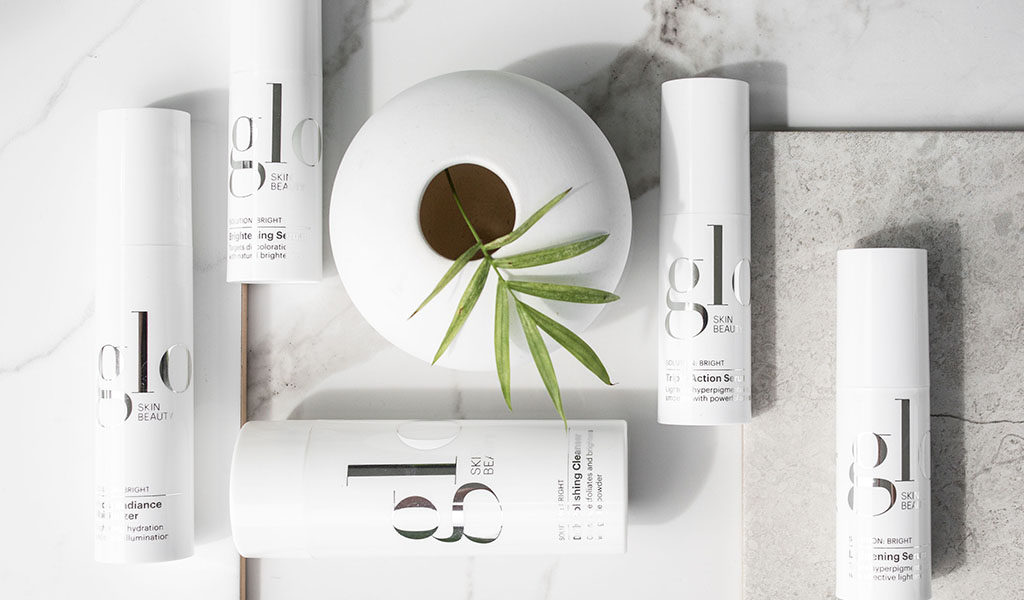- Featured
- Ingredient Spotlight
- Best Sellers
- Skincare
- Makeup
- Professional
- Blog

How to Brighten Skin and Lighten Dark Spots
Let's talk dark spots: tons of people have them and tons of people want them gone. Scientifically, this skin concern is known as hyperpigmentation and can result from scars, sun burns and even pregnancy. But even if addressing hyperpigmentation isn’t your number one concern, no one can say no to a fresh, glowing complexion. So, how do you brighten skin and lighten dark spots? Read on to learn more.

Which Ingredients Brighten Skin?
Choosing the right ingredients is the first key to erasing dark spots. You'll want to look for formulas that contain chemical exfoliants and/or brightening agents to get the best results. Below are some of our favorites:
Glycolic/Lactic Acids: Simply put, Alpha Hydroxy Acids stimulate exfoliation. Think of them as removing the ‘glue’ that holds your old/ dead/ darker skin cells on the surface. In addition to improving uneven tone, AHAs also improve skin texture and smooth fine lines. More sensitive? Try Lactic Acid, as it has a larger molecular size and can’t penetrate as deep.
Vitamin C: We’re huge fans of Vitamin C for a variety of reasons. Not only does it inhibit melanin production, which lightens hyperpigmentation, but it also protects against free radicals. Free radicals destroy healthy cells and can cause a number of skin conditions, including, you guessed it, hyperpigmentation.
Hydroquinone: An FDA-approved skin lightening agent that inhibits the production of melanin by targeting excess pigmentation for a more even tone. If you’re serious about reversing dark spots, this should be at the top of your list (unless you’re pregnant or breast-feeding).
Alpha Arbutin: A plant-based alternative to Hydroquinone that evens skin tone in a more gentle manner. It is a fantastic option for clients with younger skin, who are pregnant/breast-feeding, or have sensitive skin.
What Types of Products Brighten Skin?
You can brighten skin with almost any type of product but it's more effective the longer it stays on. We especially love serums and moisturizers because they allow the active ingredients to penetrate surface cells and brighten skin. If addressing hyperpigmentation is a top priority for you, stick to brightening serums, if it’s not your #1 concern, incorporate brightening ingredients in other areas of your routine.
This all means nothing if you don’t know how the products and ingredients should fit into your routine. To help, we've created an example routine for someone whose main concern is hyperpigmentation:
Cleanse: Daily Polishing Cleanser
Tone: Purifying Mist or Glycolic Resurfacing Toner if you’re not afraid of active ingredients (read: if you don’t have sensitive skin)
Boost: Daily Power C (AM), Daily Hydration+(AM), Brightening Polish (2-3x/week)
Serum: Brightening Serum (AM and/or PM) OR Lightening Serum (PM only)
Moisturize: Hydra Radiance Moisturizer
SPF: Choose your fave, we have several options
When Will I See Results?
Unfortunately, not any time soon. Lightening dark spots takes time and patience. You’re not going to see results right away, which will make you want to switch to new products, but you won’t see results from them right away either. Instead of constantly purchasing new products and ditching them after two weeks, stick with your routine for two months before you make a decision. If you experience any negative reactions that seem a little off, however, discontinue use right away.
Anything Else?
Glad you asked. We've said it once but we'll say it again: wear sunscreen! This is especially important when treating hyperpigmentation for two reasons. First, ingredients that help brighten skin also make skin more sensitive to the sun; second, sun exposure exacerbates hyperpigmentation and can make it worse. It goes without saying that this is the opposite goal when trying to lighten dark spots.
Are you ready to say goodbye to dull, tired skin? Click here to shop our entire Bright Skin Solution.
July 16, 2019
